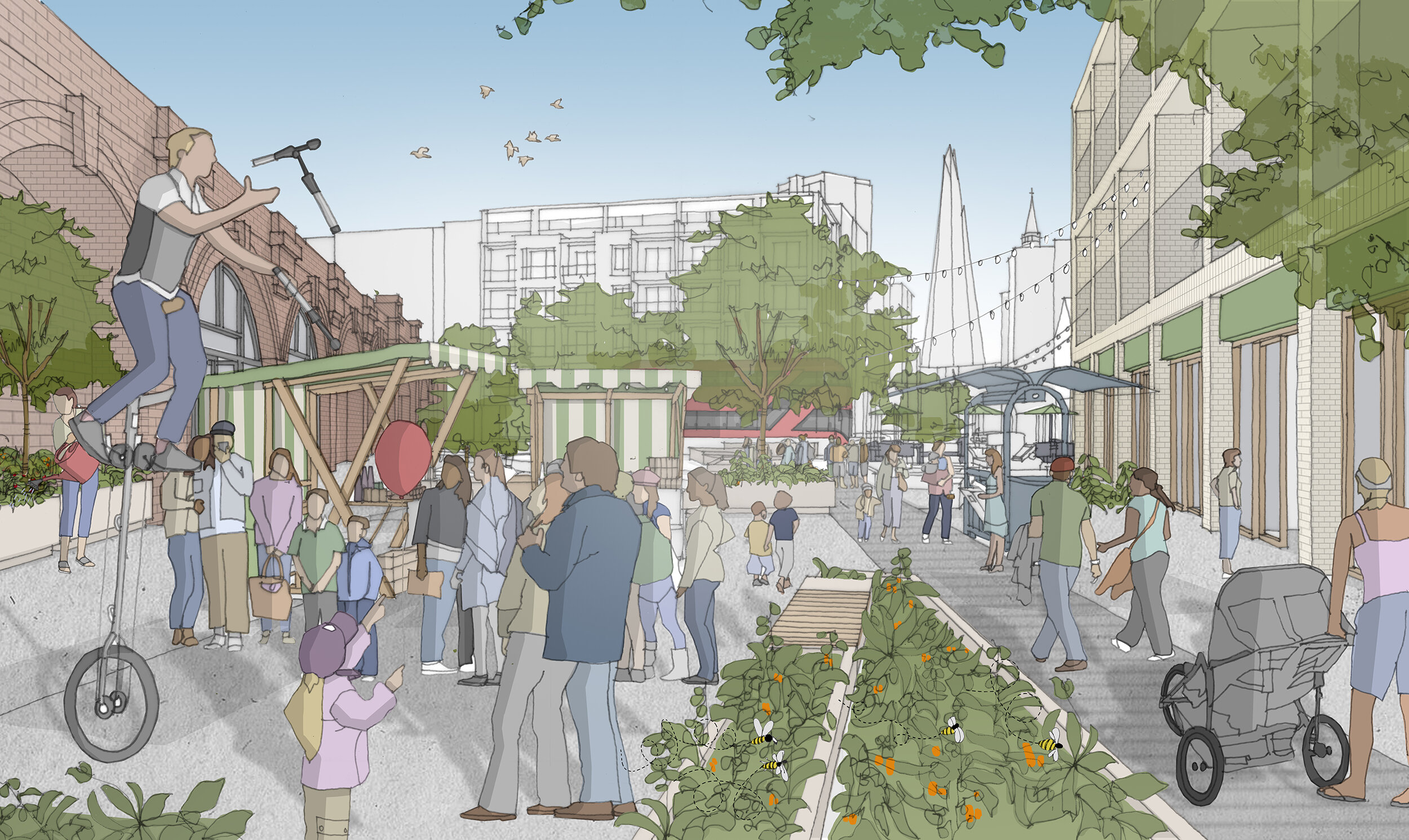NLA Research: Resilient London
We're pleased to support New London Architecture's Resilient London report. In the lead up to COP26 in November, this new research examines the role that London as a world leading city is playing in mitigating climate change, and how it is preparing for future climate events.
Two of our projects have been included in the report: 22 Park Crescent and our sustainable strategy for the Low Line Commons.
At 22 Park Crescent, two existing buildings with 92 apartments have been retrofitted and upgraded, while the residents remained in occupation. Designed and built in the 1960s, they form part of the new Regent’s Crescent development which reinstates residential use to the Grade I listed crescent. A strategy was formed to save these existing blocks and upgrade them using a fabric first approach.
‘The sustainable retrofit of these two 1960s buildings is complimentary to the Regent's Crescent development. The method of construction resulted in a successful approach to secure future climate resilience of London building stock. They contribute to London’s zero carbon aspirations by taking an opportunity to update large areas of failing masonry, bringing them into the realm of carbon reduction. The future benefit of this careful design will endure for the occupants and indeed they have already responded positively.’
Iain McLellan, Associate
Hear more from Iain about how these two buildings were saved, in our article ‘A new lease of life; retrofitting and upgrading two 1960s blocks behind the iconic Regent’s Crescent’.
22 Park Crescent, where two existing 1960s blocks have been retrofitted and upgraded as part of the wider Regent’s Crescent development
Low Line Commons, a sustainable vision and strategy, will connect people with nature and increase environmental resilience along its length by promoting innovative greening and sustainability projects that mitigate climate change. The strategy will tie streets and spaces around the viaduct that currently are divided and disconnected, while celebrating the diversity and unique characteristic of each area.
In addressing the climate challenge, Low Line Commons will provide an inspiration for other parts of London. With hotter peak summer temperatures, rainfall and storm events, the vision is designed to provide refuges away from the heat with ‘Blue Green Streets’ enabling safer, cooler walking routes and lower exposure to air pollution. Extensive urban greening will cool the air naturally; urban forests will slow the rainfall before capture in raingardens in both vertical and ground level design areas. A native planting palette will contain lower maintenance species that are drought, shade and pollution tolerant.
‘This is a bold vision for greening, wildlife and opportunities for people and nature along the route of the viaducts from Southwark to Bermondsey. It will be part of London’s National Park City, helping make half of London green by 2050. It creates a natural resource as large as Southwark Park, a cultural resource that offers value comparable to the River Thames, and community spaces where residents and businesses coexist because they support each other, underpinning environmental and social sustainability.'
Prachi Rampuria, Senior Urban Designer
Low Line Commons promotes innovative greening and sustainability projects that mitigate climate change



